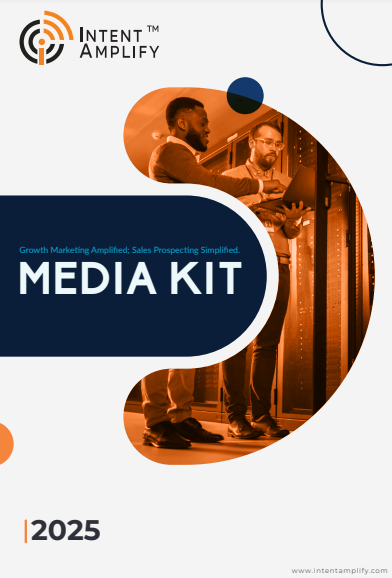
Why Your Growth Pipeline Fails Without Historical Behavior Insight and How to Fix It Today
- Last updated on: August 22, 2025
Every marketer wants a growth pipeline that delivers qualified leads consistently and meets their organization’s revenue expectations. However, regardless of sophisticated tools and data availability, many growth pipelines do not perform well. The missing element is often historical behavior insight. If you do not understand how prospects have interacted with your brand over time, you will be left with chasing fragmented signals that misrepresent actual intent.
Historical behavior is about more than evaluating the past. It’s a matter of linking patterns, discovering repeating buying signals, and knowing what comes next. If you neglect this aspect, then you might end up misallocating resources, losing high-value accounts, and undermining your sales strategy.
Why Historical Behavior Matters
A single click, download, or website visit doesn’t tell the full story. Buyers today operate in long, fragmented journeys. According to Gartner, B2B buyers spend only 17% of their time meeting with vendors during the purchase process. The rest happens across research, peer reviews, and silent engagement.
If your pipeline strategy relies only on recent or surface-level actions, you’re missing months or even years of context. By examining behaviors of accounts and users over time, you discover:
- Which channels repeatedly lead to repeat engagement
- What type of content topics repeat in a buyer’s journey
- When accounts re-engage in active research cycles
Without this, you can fill growth pipelines with leads that look active, but have low long-term intent.
The Risks Of Not Using Behavioral History
A pipeline lacking behavioral history tends to be weak in three distinct ways:
1. Lead scoring that does not accurately reflect behaviors
When models do not consider long-term activity, one visitor downloading one eBook can rank better than an account consistently behaving around content related to the original visitor eBook over the months. A false sense of opportunity is created.
2. Lost High-Intent Accounts
Silent buyers browsing blogs for months, visiting pricing pages repeatedly, or returning to case studies are indicators of readiness. Not recognizing these breadcrumbs gives competitors the chance to capture them first.
3. Pipeline Instability
Marketers indicate that a mere 27% of leads passed to sales are qualified (MarketingSherpa). Without context, campaigns inflate volume but reduce close rates, destroying trust between sales and marketing.
How to Leverage Historical Behavior to Make Your Pipeline More Solid
Connect the Dots Over Time
Today’s intent platforms enable you to monitor aggregate buyer journeys instead of singular events. By plotting engagement over several weeks or months, you can distinguish “one-off interest” from “sustained demand.”
Segment Based on Patterns
Historical knowledge allows segmentation not just by demography but by clusters of behavior. For instance, accounts that continually come back to security-related content indicate greater intent than those bouncing around unconnected subjects.
Align Sales and Marketing on Context
Rather than leaving sales with a list of “hot leads,” marketing can provide accounts with established behavioral depth. Supported by months of engagement history. This builds more confidence in the pipeline and speeds conversions.
Leverage Predictive Analytics
Historical data can be used to train predictive models to predict future engagement likelihood. Salesforce records companies leveraging predictive insights as experiencing up to 36% increased revenue growth.
Real-World Case Study: Ceros Unlocks Pipeline with Historical Insights
Ceros, a digital design platform, had an all-too-familiar issue: its sales team was wasting hours pursuing leads that appeared hot at the time but never closed. What had been missing was a historical behavior. With ZoomInfo’s intent and behavior tracking, Ceros began layering in signals such as repeated website visits, past demo requests, and historical content engagements. In one quarter, they reduced wasted sales calls by 40% and saw a quantifiable increase in pipeline quality.
This isn’t a singular incident. HubSpot discovered that incorporating long-term behavior, like repeated eBook downloads or frequent webinar attendance, into account increased MQL-to-SQL conversion rates by more than 30%. Likewise, Adobe Marketo Engage users who incorporated long-term behavior trends into their personalization efforts were 28% more engaged, demonstrating that when you look back at customer behavior, you open up the most reliable indicators of future buying intent.
How to Get Started Today
Mending a broken growth pipeline does not require you to blow up your whole playbook for sales and marketing. The first thing to do is just take a glance at where your customer behavior data already resides. Most businesses already have it lying around in various locations. Your CRM records conversations, your marketing automation tool monitors campaigns, and your web analytics indicates how prospects are interacting over time. The issue is, these pieces of information reside in isolation.
The next step is to join the dots. Pulling engagement signals into one place allows your team to understand patterns they wouldn’t see otherwise, such as a prospect who has downloaded three whitepapers in six months but has only just scheduled a demo. Those long-term signals are usually more significant than a solitary form-fill.
It’s a matter of reframing how you assign credit to leads. Old models tend to put a lot of weight on instantaneous actions, like opening an email or hitting a link. A better model weighs those instantaneous actions against repeat activity over the course of months. This keeps your sales team from prioritizing the “noisy” leads too highly and forgetting about the ones that are quietly demonstrating real intent.
The fact is, repairing a weak pipeline isn’t a matter of working harder. It’s a matter of working smarter with the information you already possess. By adding history to the equation, you provide your team with a clearer, more dependable road to success.
Conclusion
Growth pipelines stall not because marketers don’t have leads, but because they don’t have context. Insight from historical behavior bridges the gap, turning isolated interactions into a cohesive picture of buyer readiness. And by following long-term engagement, marketers can prioritize the right accounts, align more with sales, and ultimately drive pipeline growth that sustains. Your buyers have been narrating their story all along. It’s time to begin listening.
FAQs
1. What is historical behavior insight in B2B marketing?
It’s the analysis of past buyer interactions, engagements, and signals to predict future intent and refine targeting strategies.
2. Why does ignoring behavioral history hurt the pipeline?
Without context, marketers chase surface-level leads, miss hidden intent, and waste spend on accounts unlikely to convert.
3. How do SaaS companies use behavior data successfully?
They track patterns like repeat demo requests, content downloads, or renewal cycles to identify accounts most likely to engage.
4. Can small teams apply historical behavior insights?
Yes. Even simple tools like CRM tracking or marketing automation platforms provide enough data for effective targeting.
5. What’s the fastest way to fix a failing growth pipeline?
Start by auditing past customer journeys, identifying top conversion signals, and aligning sales and marketing on data-driven priorities.



